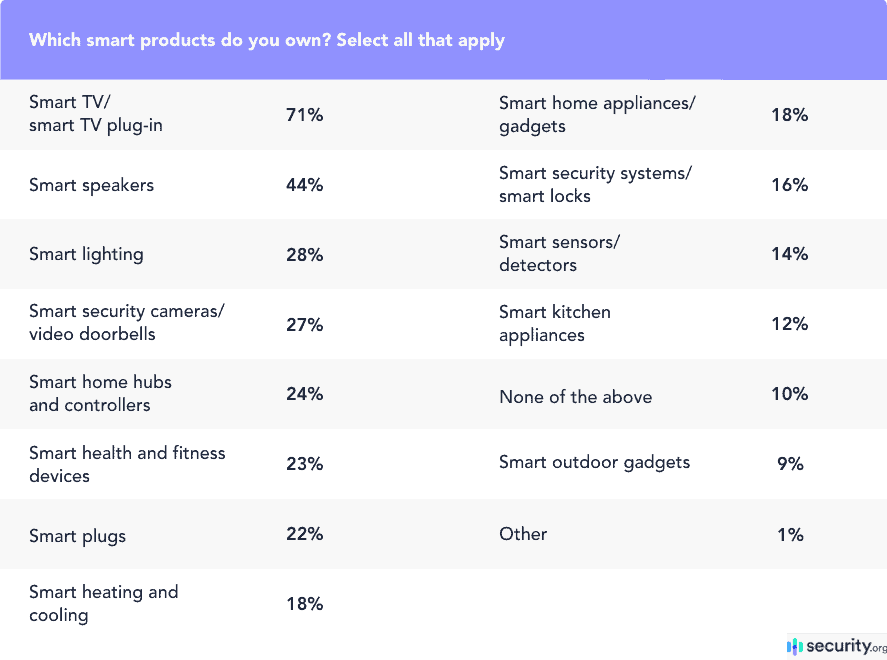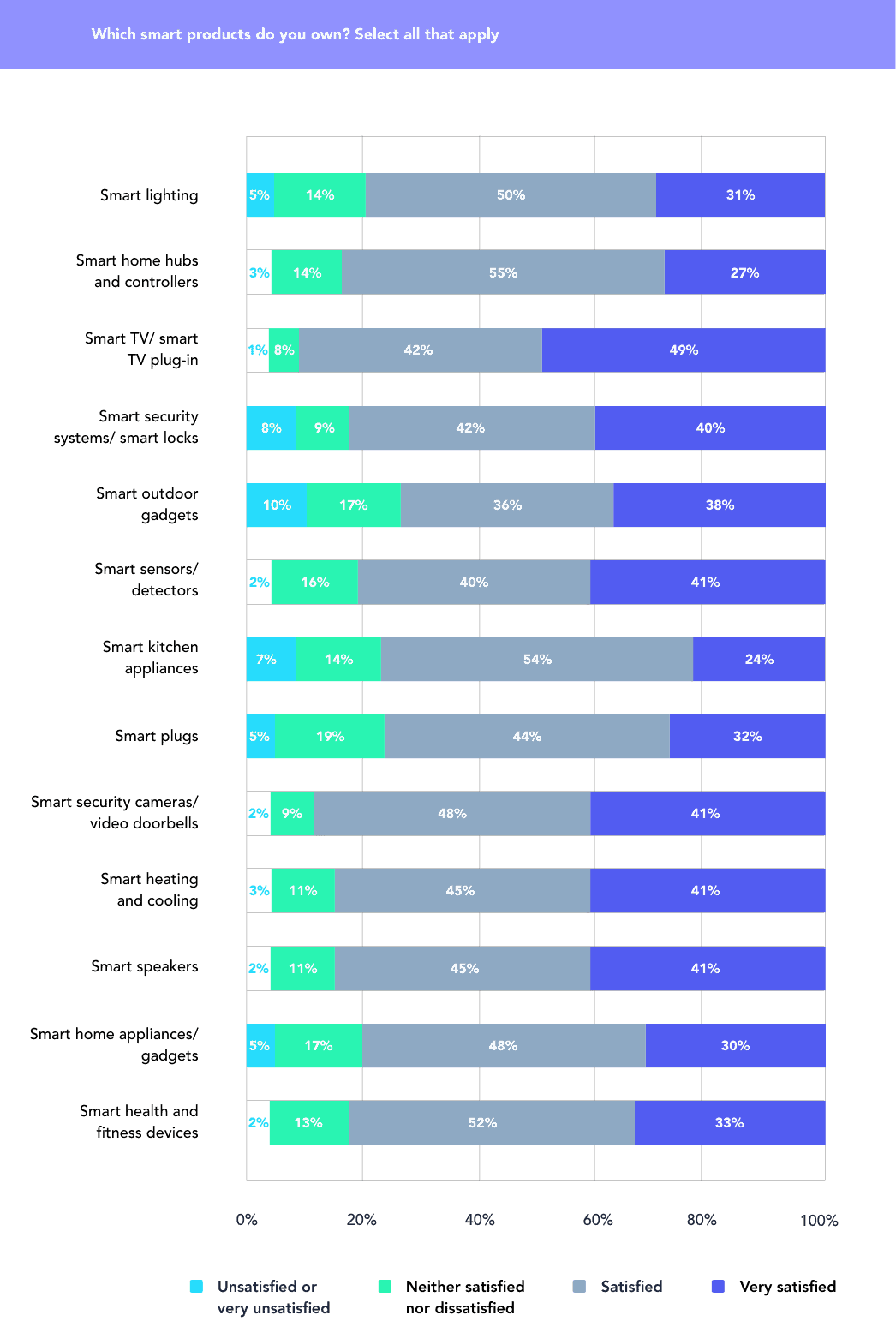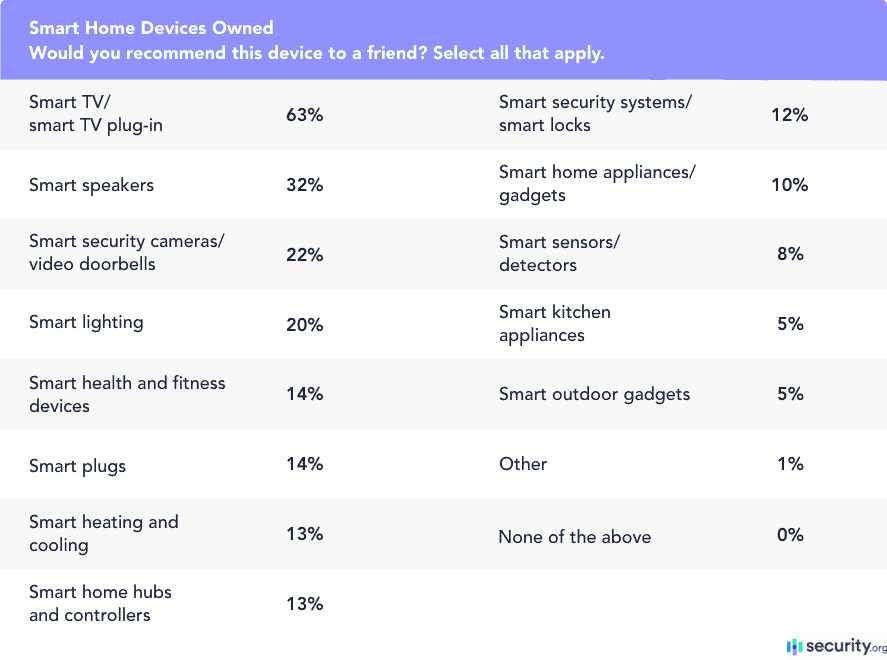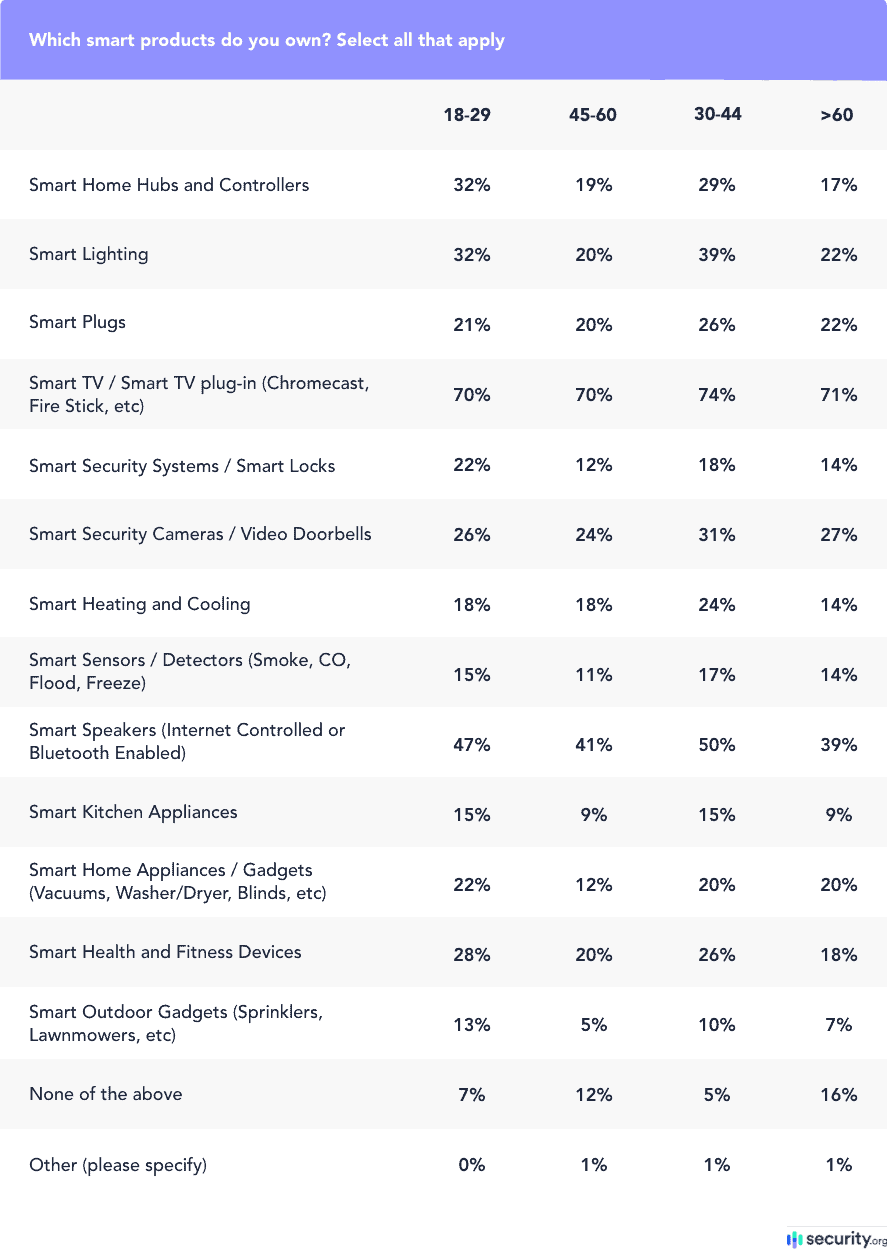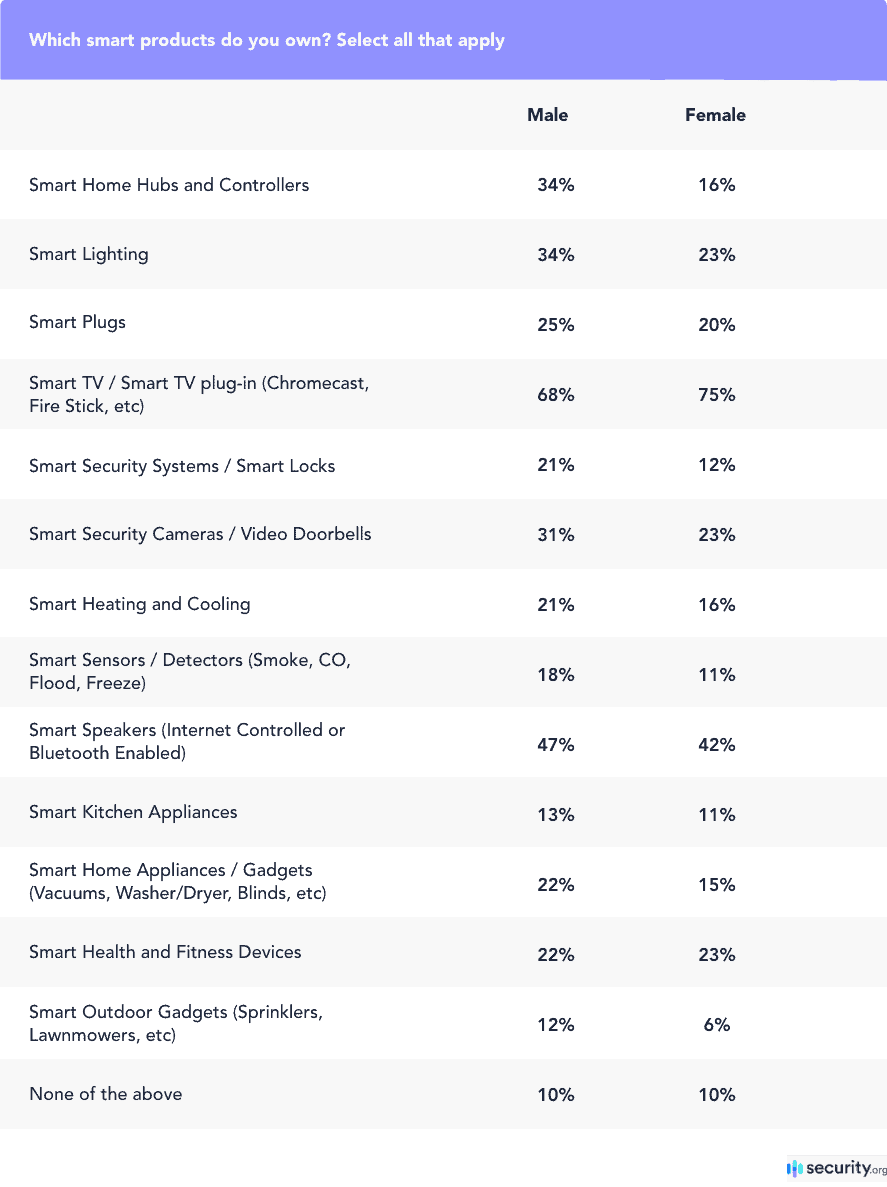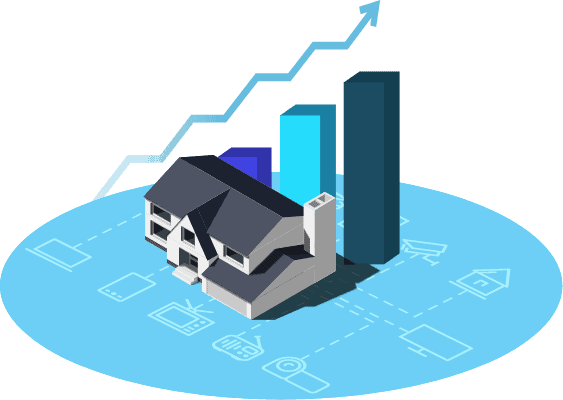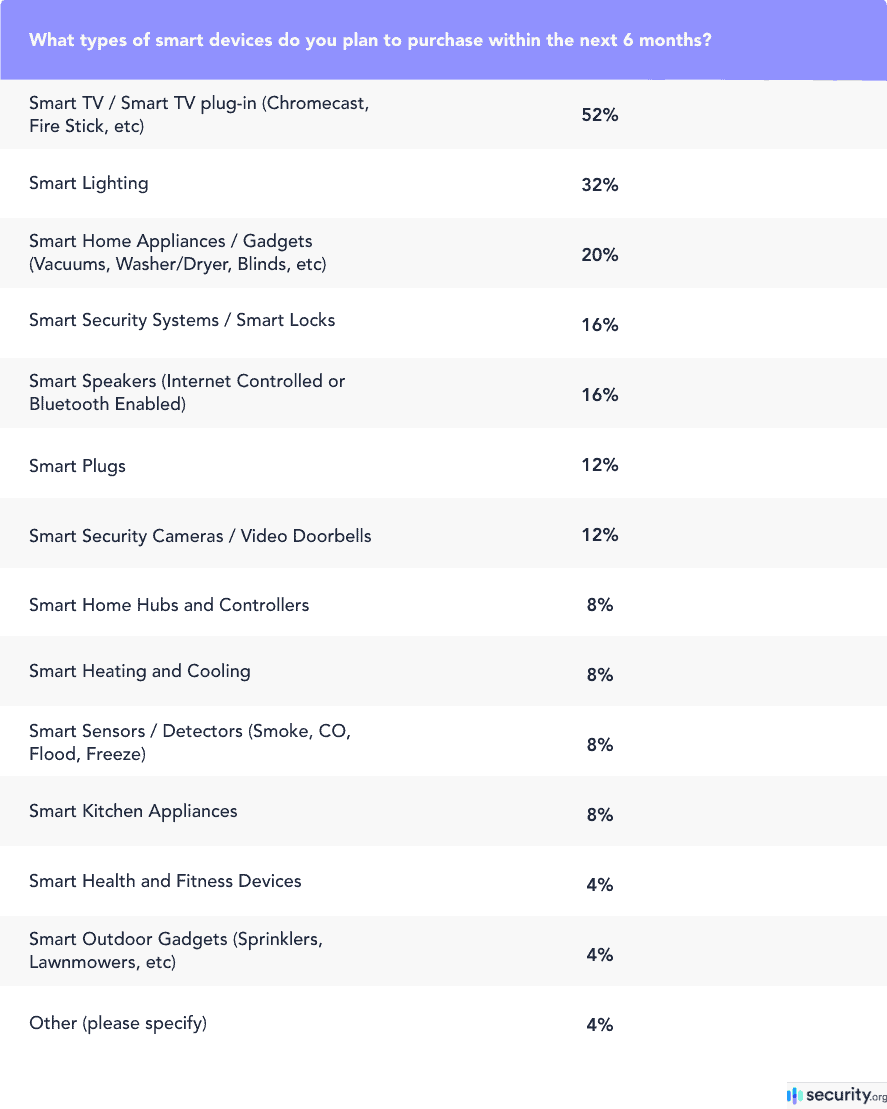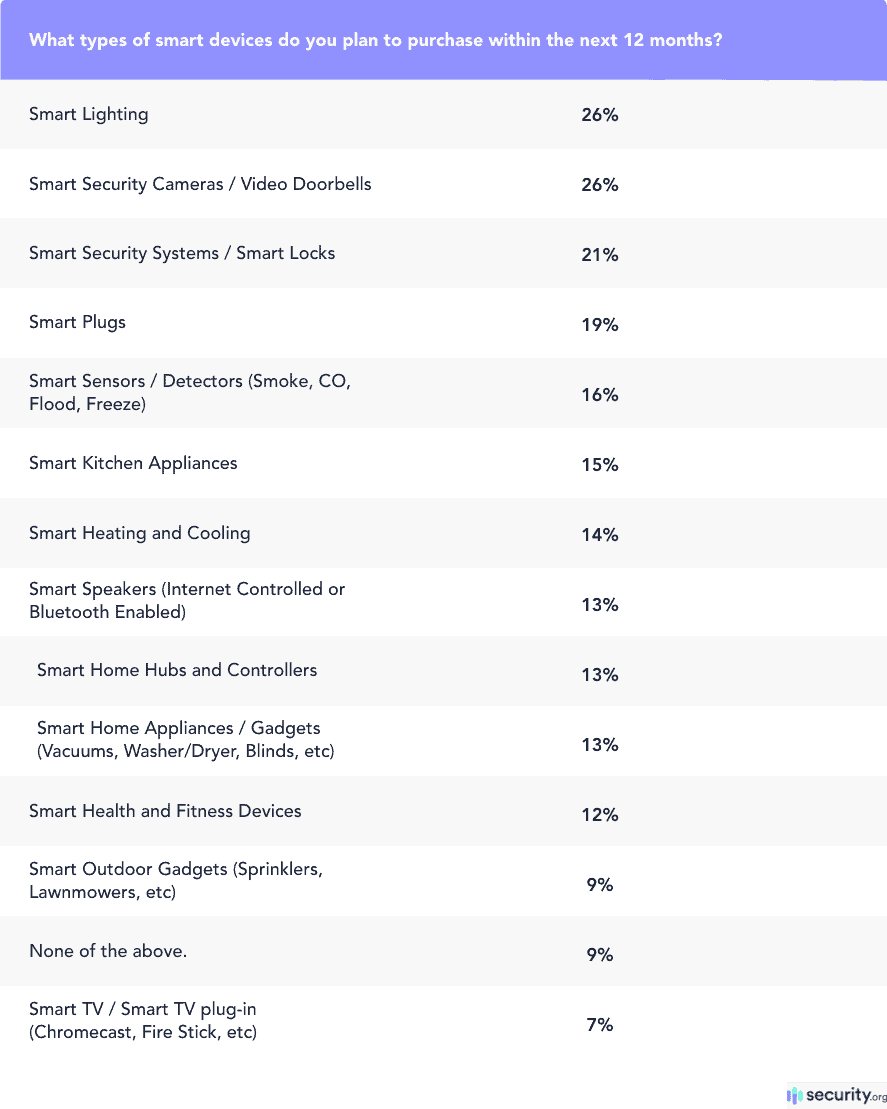Smart Home Technology Usage, Satisfaction and Purchase Intent: 2020
WITHIN THE NEXT YEAR, OVER 80 MILLION U.S. HOUSEHOLDS INTEND TO PURCHASE A NEW TYPE OF SMART HOME DEVICE.
Smart home technology has grown in popularity tremendously since the early 2010s, and for good reasons. Smart home products are convenient, they save us money, and they can make our homes safer and more secure. But how popular is smart home technology, exactly?
According to research, approximately 32 percent of U.S. households had smart home technology as we entered a new decade (2020s). From the same study, it was estimated that that market reach will grow to 57 percent by the mid-2020s.1
This report looks at the types of smart home technology consumers own today, their satisfaction with the technology, and plans to purchase new or upgraded “smart tech” over the next 12 months. Which devices are the most (and least) liked, and do people plan to invest more money into Internet of Things (IoT) devices?
Our research finds significant demand for these products, at higher rates than previously forecasted. Here are key findings of our research, based on responses from 605 self-identified decision-makers of home electronics purchases.
- The most popular smart home devices today are smart TVs, smart TV plug-ins, and smart speakers.
- Sixty-four percent of our respondents said they were planning to buy a new type of smart home technology within the next year, which equates to more than 80 million households in the U.S. and significantly higher than industry forecasts.
- Of the households that weren’t interested in owning or using smart home technology, most said it wasn’t needed or relevant, while others noted its high cost and privacy implications.
The Most-Owned Smart Home Devices Today
Smart TV and smart TV plug-ins like Chromecast and the Amazon Fire TV Stick are the most-owned smart home devices today. This is consistent with eMarketer’s 2020 research that said that video entertainment is the most common category for smart home technology, beating home monitoring and security among other types of devices.
How Satisfied Are Consumers With Their Smart Home Tech?
Given their popularity, it also wasn’t surprising that most people were satisfied with their smart TV, TV plug-ins, and smart speakers. In general, consumers are satisfied with their smart technology purchases.
Our survey shows that consumers are most satisfied with their smart TV and TV plug-in purchases, with 42 percent saying they were satisfied and 49 percent saying they were very satisfied, combining for 91 percent. This is followed by smart security cameras and video doorbells with an 89 percent satisfaction rate.
On the other hand, the type of smart home products that seemed to least satisfy its buyers are smart outdoor gadgets, such as robot lawn mowers and pool cleaners and smart sprinklers. 10 percent of the respondents said they were either unsatisfied or very unsatisfied.
Would Consumers Recommend Smart Home Tech to Friends?
If someone is satisfied with a product, they would recommend it to a friend…right? In general, we saw lower recommendation rates compared to satisfaction rates.
Why Consumers Say They Aren’t Interested in Purchasing Smart Home Technology
Not everyone wants to buy and use smart home technology. Many people find it unnecessary, irrelevant, and too expensive. Others had privacy concerns given the insecurity of many IoT devices and the commonality of security breaches.
Who Is Buying Smart Home Tech?
We were also curious about exactly who buys smart home technology the most based on age, gender, household income, region, and device type.
Age
Millennials and GenXers are most likely to have smart home technology. We believe this is because this generation has both buying power and curiosity about the latest tech.
Gender
Men and women are equally likely to own smart home technology, but one discrepancy we found was in smart home hubs and controllers, which men were twice as likely to own.
The Future of the Smart Home
As we said before, about two-thirds of people want to buy even more smart home tech than they already have, either in the next six months or the next year. We found out what types of tech they are interested in buying, specifically.
What They’re Purchasing in Next Six Months
Not surprisingly considering their overall popularity with consumers, most of our respondents said they wanted to buy smart TVs and TV plug-ins within the next year. In fact, 52 percent of respondents said that they had smart TVs in their shopping lists.
Following smart TVs are smart lights, another entry-level category for smart home technology. Smart lights, which can be classified as Wi-Fi connected smart bulbs or switches, provide consumers an easy and affordable way into smart home technology.
What They’re Purchasing in Next 12 Months
Some less urgent purchases were smart lighting, security cameras, video doorbells, security systems, and smart locks. In general, more people planned to purchase IoT devices within the next six months as opposed to a year, which implies a sense of urgency, especially for entertainment-related products like smart TVs. While we hypothesized that smart security products would be more urgent given their effect on home burglary, apparently streaming is a more pressing matter, according to our data.
Recap
One thing from our research that rang true was people’s high usage and enjoyment of smart home technology. It’s no secret that these devices make our lives more convenient, safer, and more energy-efficient, and the industry is only growing year after year. If you want to hop on the bandwagon, read our home automation guide, which tells you how to build a smart home from start to finish.


